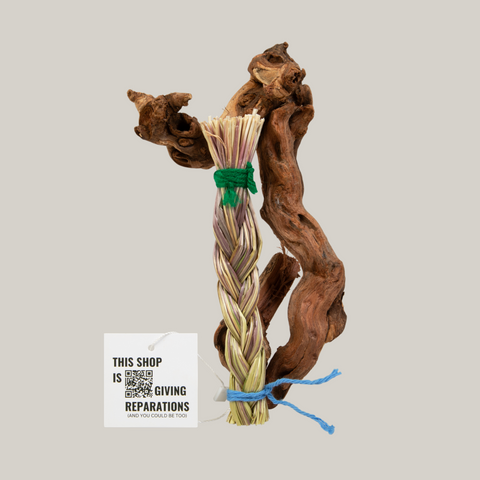

Wiingaashk (Sweetgrass) Braid
Wiingaashk (pronounced “ween-gahshk”) is the Anishinaabemowin word for Sweetgrass, a plant cultivated for thousands of years by the Anishinaabe people on their ancestral homelands across the Great Lakes region and northern plains.
One of the four sacred medicines—alongside Cedar, Sage, and Tobacco—Sweetgrass is revered as the “Sacred Hair of Mother Earth.” Wiingaashk is traditionally used to uplift the spirit, purify spaces, and carry prayers to the Creator. Its scent is soft, sweet, and vanilla-like, inviting peace, love, and clarity wherever it’s burned.
In Anishinaabe tradition, Sweetgrass is braided in three strands to represent the unity of mind, body, and spirit. Each braid may contain seven finer strands, symbolizing the Seven Sacred Teachings: love, respect, humility, truth, honesty, courage, and wisdom. Burned in ceremony, Wiingaashk is a medicine of gentleness and connection, drawing people into harmony with themselves and the world around them.
These sacred qualities are mirrored in the plant’s physical properties. Sweetgrass contains coumarins—natural compounds known for their antibacterial, anti-inflammatory, and mood-lifting effects. These plant properties support emotional healing and energetic renewal, offering softness and strength in every breath of her fragrant braid.
📦 BUNDLE SPECS
-
Approximately 5 inches in length
-
Hand-harvested by a First Nations community in Canada
-
Tied with natural white cotton string
-
Packaged with a tag noting your contribution to reparative justice
- Currently sourced from Running Bear Medicines
